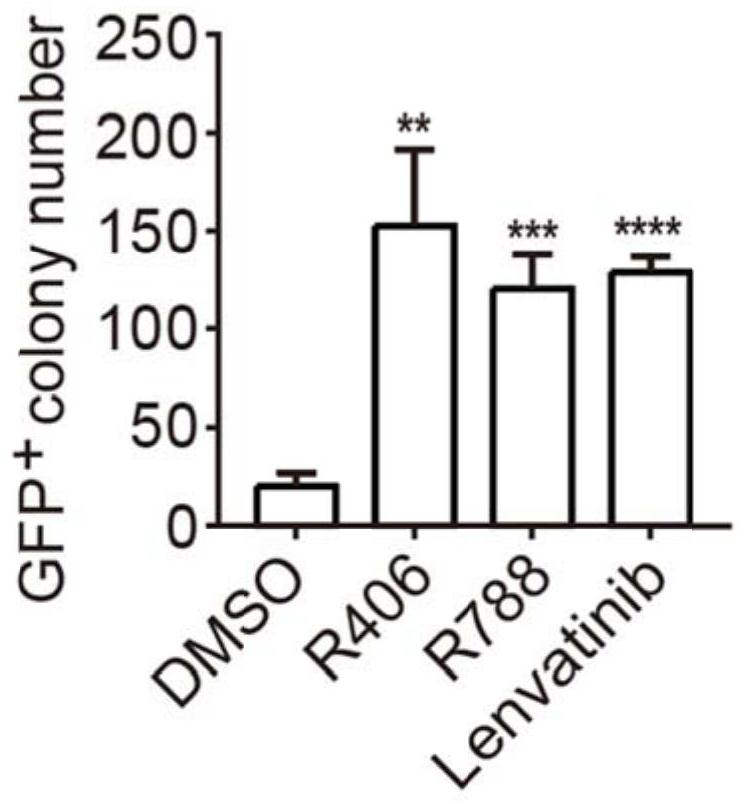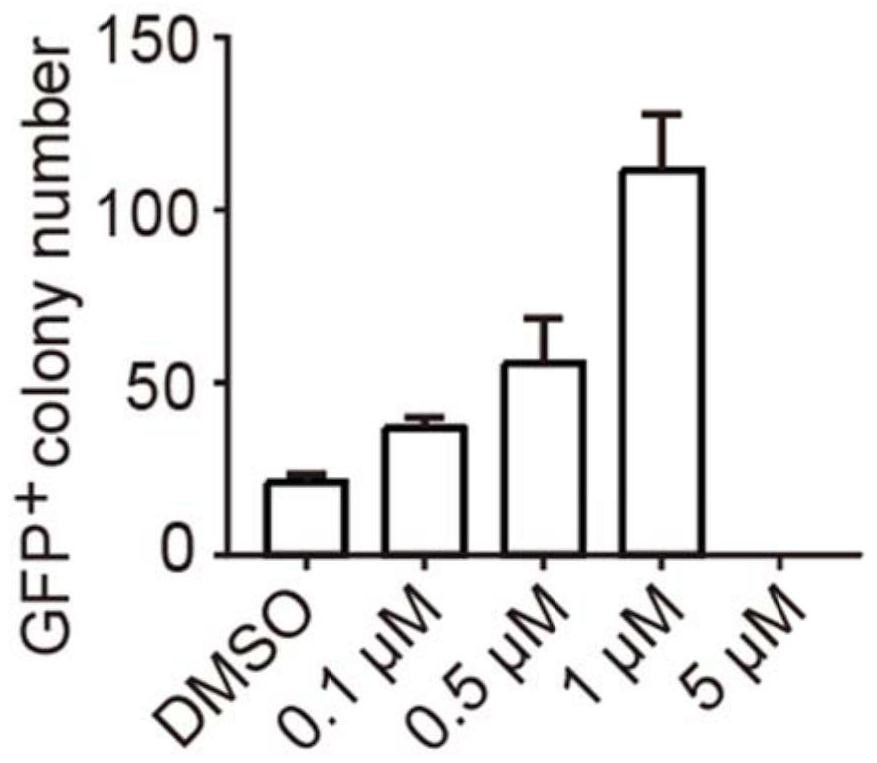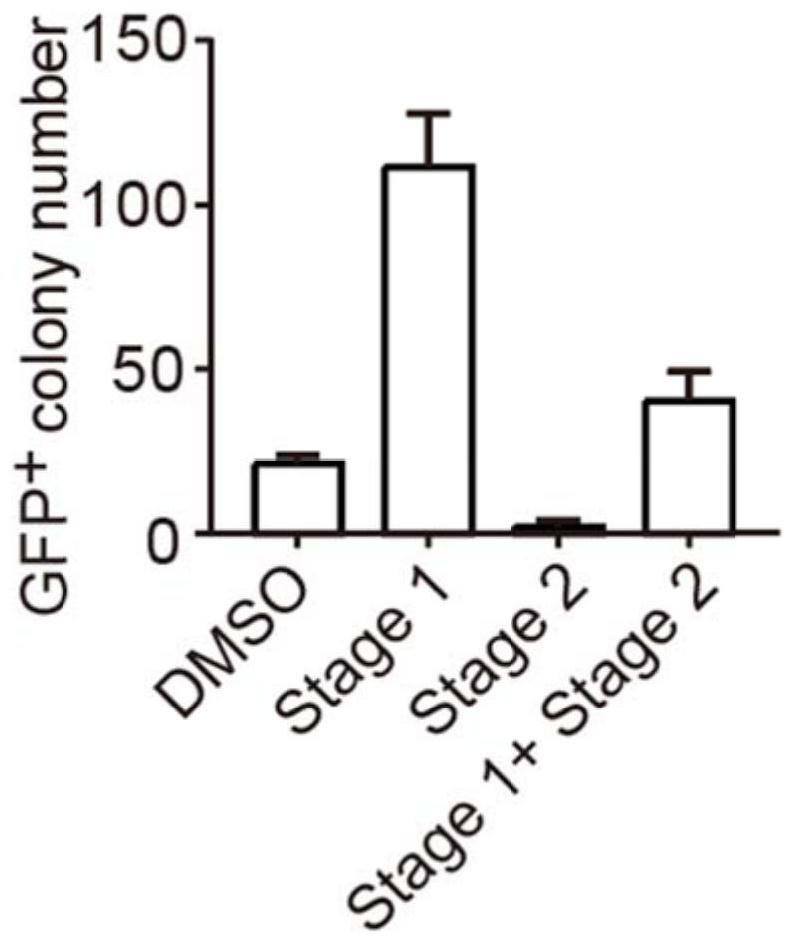Application of R406 in promotion of somatic cell reprogramming, and reprogramming culture medium and method forpromotion of somatic cell reprogramming
A technology of reprogramming and culture medium, applied in cell culture active agents, applications, animal cells, etc., can solve the problems of limiting the clinical application of stem cells, unclear molecular mechanism, low efficiency, etc., to promote chemical reprogramming and increase H2S level. , the effect of improving efficiency
- Summary
- Abstract
- Description
- Claims
- Application Information
AI Technical Summary
Problems solved by technology
Method used
Image
Examples
Embodiment 1
[0047]The chemical reprogramming system includes three stages: Stage 1, Stage 2 and Stage 3. Specifically, after Stage 1 ends, cells begin to express marker genes in the early stage of reprogramming, such as Sall4; after Stage 2 ends, cells begin to express stem cell marker genes, such as Oct4; after Stage 3 ends, mature stem cells are formed. Therefore, somatic cells were sequentially cultured in different media (Stage 1 medium, Stage 2 medium, and Stage 3 medium) in order to search for small molecules that promote chemical reprogramming. Each stage goes through 12 days, and takes 36 to 40 days in total.
[0048] Among them, Stage 1 medium includes 78% DMEM, 10% KSR, 10% FBS, 1% NEAA, 1% P / S, 0.055mM β-ME, 20ng / mL bFGF, 0.5mM VPA, 20μM CHIR99021, 10μM 616452, 5μM Parnate, 50μM Forskolin, 0.5μM AM580, 5μM EPZ004777 and 250μM vitamin C (Vc); Stage 2 medium contains 78% DMEM, 10% KSR, 10% FBS, 1% NEAA, 1% P / S, 0.055mM β-ME, 20ng / mL bFGF, 0.5mM VPA, 10μM CHIR99021, 10μM 616452,...
Embodiment 2
[0062] Through the concentration gradient test, it is found that 1 μM is the optimal concentration of R406 (such as figure 2 shown); in addition, we also confirmed that R406 promotes the expression of the typical early pluripotency gene Sall4, and specifically plays a role in the early stage of reprogramming ( image 3 shown). The above experimental results show that the effect of R406 is stage-specific, and the optimal use time is the early stage of reprogramming (d0-d12), and the optimal concentration is 1 μM.
Embodiment 3
[0064] Since Sall4, Cdh1, Epcam and Esrrb are stem cell marker genes, Cdh1 and Epcam are also marker genes of mesenchymal-epithelial transition (MET). In order to further verify the role of R406 in promoting reprogramming, we performed real-time fluorescent quantitative PCR (RT-qPCR) experiments to detect the expression of these genes. The results showed that the addition of R406 at the early stage of reprogramming significantly increased the expression of pluripotent genes.
PUM
 Login to View More
Login to View More Abstract
Description
Claims
Application Information
 Login to View More
Login to View More - R&D
- Intellectual Property
- Life Sciences
- Materials
- Tech Scout
- Unparalleled Data Quality
- Higher Quality Content
- 60% Fewer Hallucinations
Browse by: Latest US Patents, China's latest patents, Technical Efficacy Thesaurus, Application Domain, Technology Topic, Popular Technical Reports.
© 2025 PatSnap. All rights reserved.Legal|Privacy policy|Modern Slavery Act Transparency Statement|Sitemap|About US| Contact US: help@patsnap.com



